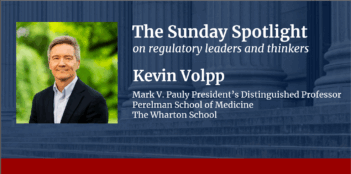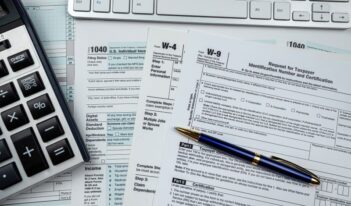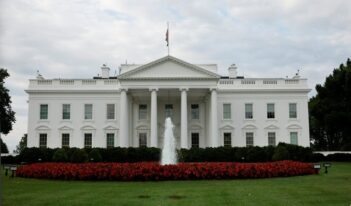
An alternative regulatory approach could entice business to create a healthier American diet.
Many public health advocates are calling for a tax on sodas and other sugar-sweetened beverages. Others are calling for a wider tax on sugar that would help block the shift from buying sweetened drinks to buying other sweets that would likely occur if a tax is narrowly focused on beverages. In either case, the primary goal of the tax would not be to raise money. Rather, the point would be to improve the American diet by substantially reducing the amount of sugar we consume.
Support for a sugar tax can be found in a recent paper by Matthew Harding and Michael Lovenheim which finds that a 20% tax on sugar should reduce consumption of sugar by more than 16% and reduce calorie intake by nearly 19%.
Advocates of this sort of tax primarily envision substantially higher prices for foods and beverages that are high in sugar and, in turn, reduced sales of those products. Indeed, Harding and Lovenheim assume a pass-through of the tax to consumers. Their paper is a very sophisticated analysis that importantly models both the income and substitution effects on consumers faced with higher prices for sugar-containing food and beverages.
I note, however, that it is also possible—and, other things equal, desirable from a public health perspective—that, in response to the tax, products that are high in sugar today will be re-formulated. The sugar content in such products would be decreased in order to reduce the tax obligation, and hence, at least partially blunt the increase in the price of the product, a possible adjustment that Harding and Lovenheim seem not to address. This is analogous to electric power companies installing better carbon filters in response to a carbon tax (rather than merely charging more for electricity in reaction to the tax).
Furthermore—and , other things equal, undesirable from a public health perspective—it is also important to appreciate that some current buyers of premium-priced popular-sized high sugar products (like 16- or 20-ounce bottles of Coke and Pepsi) could make switches in the face of higher prices of those products that are not going to reduce their sugar consumption.
For example, these consumers might switch to buying larger size containers of these beverages that, even with the new tax passed on, will not increase the buyer’s current price per ounce (since Coke and Pepsi now sell and presumably will continue to sell larger containers of their sodas at a lower price per ounce than they charge for smaller sizes). Still other consumers might switch to cheaper brands of sugar-heavy sodas (private labels or cheaper discount national brands) and also maintain their current consumption level at the current price despite the tax.
Harding and Lovenheim, based on unreported results, suggest that this sort of consumer response would be small. Yet, based on experience with how tobacco taxes cause shifts from premium to non-premium brands and how such taxes cause some smokers to smoke more carefully, I would be cautious about discounting such adjustments. For example, when faced with higher taxes, smokers have frequently inhaled more deeply, smoking down to the very end of each cigarette and subjecting themselves to more tar per cigarette consumed.
Still, these concerns notwithstanding, the magnitude of Harding and Lovenheim’s findings make a sugar tax looks very promising from a public health perspective.
Notwithstanding the attraction of a sugar tax, I propose a different way of getting to the same general outcome but without a tax. It draws on the “cap-and-trade” idea being implemented in various places in the fight against climate change. But my main emphasis is on the cap.
I argue that government should require the nation’s large food and beverage retailers to reduce the amount of sugar that passes through their cash registers. I believe that such content could be easily measured by embedding sugar information in the universal product (UPC) that is scanned when customers pay for their purchases. A 5% annual reduction would yield 20-25% less sugar being sold by the end of year five.
The retailers I have in mind are big box stores like Walmart and Costco, chain supermarkets like Safeway, Whole Foods, and Trader Joe’s, large pharmacy chains that are now substantially in the food business like Walgreen, chains of small outlets like 7-Eleven and snack food shops attached to gasoline stations, some very large wholesale food providers like Sysco (who stock the shelves of many smaller merchants), as well as chain restaurants like McDonalds, Applebee’s, Olive Garden, KFC, and the like. These few hundred firms appear to sell perhaps 90 percent of the food and beverages we consume.
I focus on retailers rather than food manufacturers not only because that is where the leverage is but also because that is where a wide variety of strategies are available to reduce the amount of sugar in the American diet. Retailers could just increase prices as with a tax, albeit pocketing the higher profit margin themselves. But, retailers can also do many other things, like pressing product makers to reduce the sugar in what they offer, altering the package or portion sizes of what is on offer in order to discourage sugar buying, adjusting the mix of products they offer in their stores, changing where in the store products are placed (which clearly influences volume sold), adjusting their advertising and in-store promotional and informational efforts, and so on.
In short, I would leave it to Walmart and the like to figure out the best way to cut back on how much sugar there is in what they sell on an overall basis, rather than pushing them rather more narrowly via a sugar tax strategy.
And, of critical importance, I predict that my proposal would be easier to enact as a political matter. I say this both because of the enormous hostility around the nation to anything openly called a tax and because of the growing successful adoption of cap-and-trade plans governing greenhouse gas emissions in contrast to the counterpart proposal of a carbon tax.
To be sure, if firms were to fail to meet their sugar reduction targets, they would have to face penalties, and under my proposal these penalties would be substantial fines (big enough, one hopes, to entice firms to meet the target, rather than just to pay the penalty). In effect, under my plan, firms would face a tax schedule that starts with a large deductible and then a high rate would later kick in if need be.
However, under my plan, not all firms would have the same overall industry target sugar reduction of 5% a year for five years. Rather, individual enterprises would have differential targets based on how heavily sugared their sales are today – so that, say, if Whole Foods is doing a better job already of switching its customers to healthier foods, it would have a lower annual reduction target than other grocery chains.
Those implementing this scheme are likely to encounter roughly the same level of problems as would be faced by those implementing a tax on sugar—or, more likely, on added sugar. However, performance-based regulation of sugar content may prove a better regulatory tactic than the sugar tax proposals, and it is a strategy that could be deployed as well to tackle the problems of calories, salt, and fat content of the American diet.




